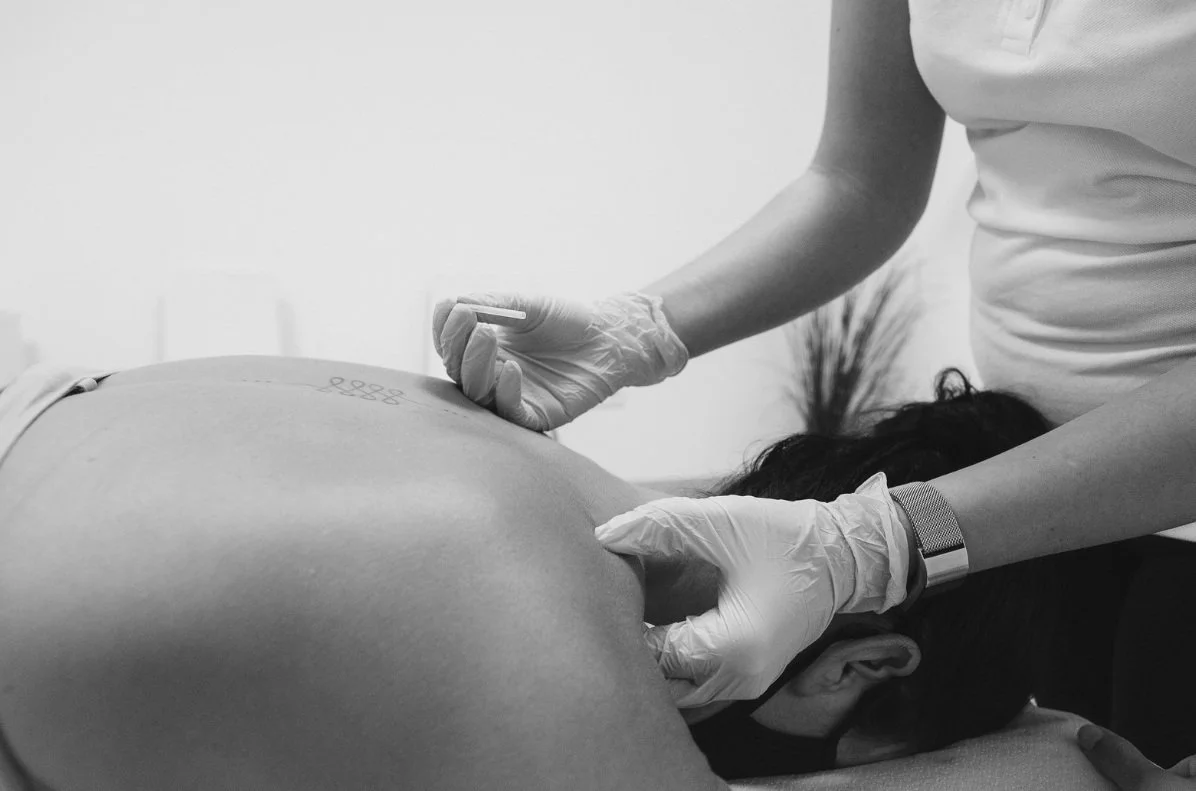Why Is My Neck and Shoulder Blade Always Sore?
Do you find yourself constantly rubbing your neck or rolling your shoulders to relieve that tight, nagging pain between your shoulder blades?
Whether you’re spending long hours at a desk, caring for young children, experience regular headaches, or recovering from an injury — neck and upper back pain is incredibly common in today’s society. But here’s the good news: it’s also very treatable with the right combination of education, hands-on therapy, movement, and support.
At Kaylana Wellness Collective, we help you understand why you’re in pain, not just how to get rid of it. And it all starts with learning how to move, strengthen, and support your body in a smarter way.
Why Does Neck and Shoulder Blade Pain Happen?
Pain in this area is often a sign of:
Poor postural endurance (your muscles aren’t strong enough to support you throughout the day to sit for long periods behind a desk)
Muscle imbalance between your chest, neck, and upper back
Weakness in your shoulder stabilisers and deep postural muscles
Prolonged static positions (like slouching at a desk or looking down at a phone)
Stress-related muscle tension, especially around the traps and jaw
Headaches stiff joints and tight muscles in the neck can refer pain into the head, causing tension-type or cervicogenic headaches.
Previous injuries past neck injuries, like whiplash or sports trauma, can create long-term movement dysfunction if not properly rehabilitated.
Why You Need More Than Just Stretching
Stretching can feel great — but if your pain keeps coming back, it’s likely because the underlying weakness and poor control hasn’t been addressed.
At Kaylana Wellness Collective, our physiotherapist focuses on identifying and correcting the root cause. Often, the missing piece is strength training for the right muscle groups, particularly the deep postural muscles, shoulder stabilisers, and thoracic spine.
How Physiotherapy Helps Neck and Shoulder Pain
Your first step with us is a comprehensive assessment.
We’ll take a detailed look at:
Posture and spinal alignment
Shoulder and neck mobility
Muscle strength, activation, and control
Daily habits, workstation setup, and movement patterns, exercise, stress
From there, we create a personalised treatment plan that may include:
Hands-on manual therapy to release muscle tension and restore mobility
Dry needling or cupping to further reduce muscle tension
Postural retraining and education for your daily setup
Targeted strength exercises for the neck, upper back, and shoulder stabilisers
Breathwork and rib mobility exercises to improve body awareness and reduce tension
Ergonomic advice and lifestyle changes to support lasting results
Nervous system support
The Power of Pilates for Neck & Shoulder Relief
We incorporate Pilates into many of our rehab programs, especially when treating persistent or recurring neck and upper back pain.
Here’s how Pilates helps:
Builds deep core and postural strength
Improves scapular stability and shoulder control
Increases thoracic spine mobility, taking pressure off the neck
Enhances body awareness, reducing poor movement habits
Supports the nervous system, lowering stress and muscle tension
Whether you’re working one-on-one with a physio or joining a small group mat class, our Pilates sessions are tailored to your body and your goals.
3 Physio-Recommended Beginner Exercises for Neck & Shoulder Blade Relief
1. Chin Tucks
A go-to for improving posture and activating the deep neck flexors.
Sit or stand tall, gently draw your chin back (like making a double chin), keeping your gaze level.
Hold for 20 seconds, repeat 3 times.
Why it helps: Reduces forward head posture and supports spinal alignment.
2. Book Openers
A gentle thoracic spine mobility exercise that also opens up the chest.
Lie on your side with knees bent and arms stacked in front.
Slowly open your top arm across your body, following it with your eyes.
Breathe deeply and return to start. Repeat 8–10 per side.
Why it helps: Improves rotation through the mid-back, reducing strain on the neck and shoulder blades.
3. Scapular Retractions with a Band
Strengthens the mid-back and promotes better posture.
Hold a resistance band with arms extended forward.
Gently squeeze your shoulder blades together as you pull the band apart.
Keep shoulders relaxed and down. Repeat 8–10 times.
Why it helps: Activates key postural muscles like the rhomboids and lower traps to support the shoulder girdle.
What Makes Kaylana Different?
We don’t offer cookie-cutter programs or quick fixes!
At Kaylana Wellness Collective in Hurstville, we don’t offer cookie-cutter programs or quick fixes. We take a whole-person approach — blending physiotherapy, movement, and mindfulness to help you recover, rebalance, and thrive.
You’ll benefit from:
1:1 Physiotherapy Assessments and follow-ups
Clinical Exercise Rehab Programs
Group Mat Pilates Classes with focus on full-body strength and mobility
A supportive and welcoming space, just 2 minutes from Hurstville Station
Personalised care based on your history, goals, and lifestyle
Ready to Move Freely Again?
If your neck and shoulders are always feeling sore, you don’t have to push through it anymore. We're here to help you feel stronger, more supported, and more at ease in your body.
Book in for your physiotherapy assessment and let’s create a plan that actually works for you. We proudly support our local community across Hurstville, South Hurstville, Penshurst, Mortdale, Oatley,Blakehurst, and surrounding suburbs — with care that’s personal, practical, and empowering.
Disclaimer: This information is general in nature and does not replace individual medical advice. Always consult with your physiotherapist or healthcare provider for assessment and personalised recommendations.


